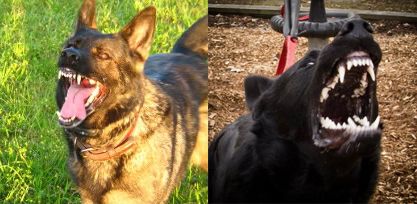I need to know the specifics regarding visual differential diagnosis of Alopecia Areata (if it can be done), and treatment...for one spot, 1 inch in diameter, male dog, 9 months old.....
I called my ex-vet (because of her lengthier experience than my new vet), who has left private practice to work in a small-animal tumor institute, and asked her for references to reading material. She asked questions I did not know how to answer (such as "is it light-responsive Alopecia; is the dog an Akita, a Bulldog, etc.; has the vet made a clinical diagnosis of autoimmune Alopecia <"Ariata" meaning, I gathered, just "areas," or "patches">; is the spot on the flank)......When I didn't know those answers she said she'd give me a link to a site that would explain why she asked those questions - a broader site than what she would give if the diagnosis were refined. And she gave me one with pictures.
Seasonal flank Alopecia is most common to Boxers and Bulldogs (but not exclusive). The differential diagnosis is made via tests such as for thyroid disorder, Cushing's disease, and alopecia X, and by the time of year (seasonality, which is photo-related), the breed, because different breeds are more prone to different types of Alopecia, what part(s) of the body is/are affected, and skin biopsies.
Here are the topics I wrote down as she dictated them, reading them from a vet handbook called INSTRUCTIONS FOR VETERINARY CLIENTS: CANINE AND FELINE SKIN DISEASES, by David D. Duclos, DVM, Dipl ACVD.
ALOPECIAS:
Pattern Alopecia
Color Dilution (or mutant) Alopecia
Endocrine Alopecia (thyroid-related, e.g.)
Injection Site Alopecia
Seasonal Flank Alopecia (Canine Recurrent Flank Alopecia)
Telogen Effluvium
Besides autoimmune disease, causes can be traction, folliculitis, an endocrine disorder such as hypothyroidism, Cushing's, etc.
Here is a site which she said to check for pictures. She did not give me the exact page (just the "home" title), and I'm not positive that the web page I'm giving you is the one, but it appears to be. Anyway, it's the general site she said:
http://www.dvmnewsmagazine.com/dvm/article/articleDetail.jsp?id=7254
This won't be word-for-word, but here's what I scribbled: Seasonal flank Alopecia is easy to confuse with thyroid, hormone (sexual, melatonin, and others), and cortisonal problems, and the best thing to do is to get a referral to a veterinary dermatologist.
About visual diagnosis: She said that it was a very small area you're talking about, and that limits the usefulness of visual determinations. Also this is one spot, not bilaterally symmetric hairloss. I'm sorry........I didn't completely catch why that was significant. (Wrote as fast as I could! LOL!)
The seasonal flank Alopecia "might be less likely" to be the diagnosis in a non-Bulldog, Boxer, or Giant Schnauzer, and you "might want to be asking about bloodwork for Cushing's, thyroid, etc."
When I looked at the pictures here:
http://www.hilltopanimalhospital.com/seasonalalopecia.htm
I saw what she meant.
So I think what I got from the discussion and the sites she directed me to was this: The underlying cause can be things that should be treated, as opposed to seasonal Alopecia, which may be melatonin-related and often resolves spontaneously (seasonally), so you might want to consider a vet dermatologist, and the treatment depends entirely on the underlying cause.
I have never had a dog with this, so nothing here is from my personal experience. Also, I was scribbling fast, and what I've typed here should be double-checked if used.
I hope it help a little. Good luck!
 Previous Topic
Previous Topic Index
Index Next Topic
Next Topic












 Top
Top



